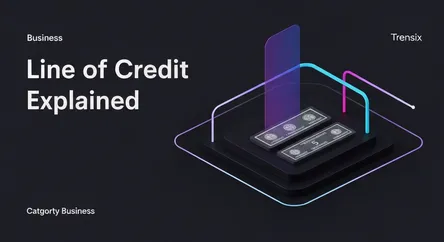Business
Line of Credit Explained

Discover the Line of Credit, a flexible funding tool for startups. Learn how it provides on-demand capital for growth and managing cash flow.
What is it?
A line of credit is a flexible form of financing offered by banks and financial institutions. Unlike a traditional loan where you receive a lump sum, a line of credit provides access to a preset amount of capital that you can draw from as needed. Think of it like a credit card for your business. You only pay interest on the amount you've actually borrowed, not the total credit limit. Once you repay the borrowed funds, your available credit is replenished, and you can draw from it again, making it a reusable financial tool for managing short-term needs.
Why is it trending?
Lines of credit are trending among startups because they offer unparalleled flexibility, which is vital in a volatile business environment. Startups face unpredictable cash flow and sudden growth opportunities. A line of credit allows them to cover unexpected expenses, manage payroll during a slow month, or invest in inventory quickly without needing to apply for a new loan each time. The rise of fintech lenders has also made these products more accessible and faster to secure than ever before, sidestepping the lengthy processes of traditional banks.
How does it affect people?
For founders and entrepreneurs, a line of credit acts as a crucial financial safety net. It empowers them to make agile business decisions, from purchasing equipment to launching a marketing campaign, without diluting equity or being constrained by tight cash reserves. This access to on-demand capital reduces financial stress, allowing leaders to focus on innovation and growth. It provides the operational breathing room necessary to navigate challenges and seize opportunities, ultimately supporting the startup's survival and long-term success.